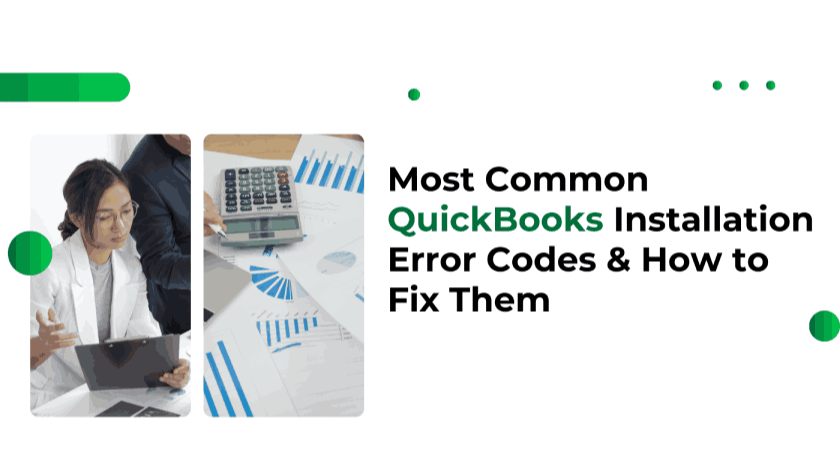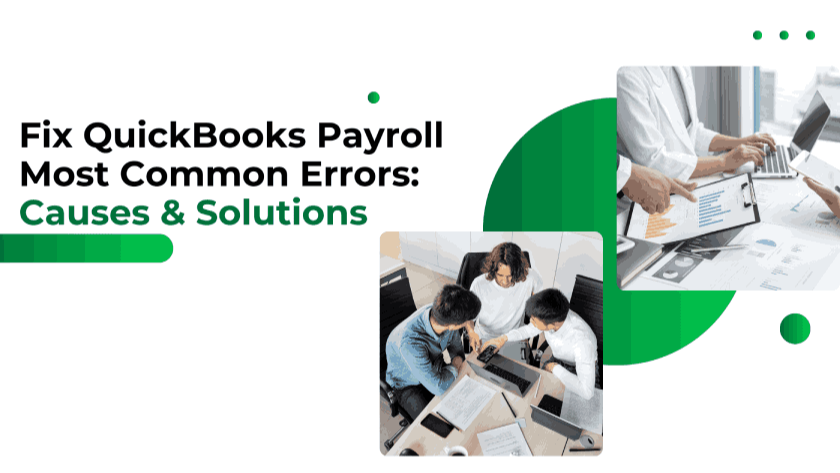Managing payroll effectively is crucial for any business, and QuickBooks offers a convenient way to handle it. However, occasional issues may arise, particularly with tax deductions and calculations. If payroll taxes aren’t being deducted correctly or tax calculations seem inaccurate, it can cause major concerns for business owners.
This article provides an in-depth guide to resolving two common QuickBooks payroll issues: missing tax deductions and incorrect tax calculations. We'll walk you through practical solutions to troubleshoot these problems and ensure smooth payroll processing.
Issue 1: Payroll Taxes Are Not Being Deducted
One of the most alarming payroll problems is when QuickBooks fails to deduct taxes from employee wages. This issue can result from incorrect settings, outdated tax tables, or software glitches. Below are some effective ways to fix it:
Verify Employee Tax Information
Errors in an employee’s tax details can prevent QuickBooks from deducting taxes properly. To check and correct this information:
-
Open QuickBooks and navigate to the employee’s profile.
-
Review essential tax details, including:
-
Social Security Number (SSN)
-
Tax Filing Status (Single, Married, etc.)
-
Number of Allowances and Exemptions
-
If any information is incorrect, update it and save the changes.
Ensuring accurate employee tax details will help QuickBooks process tax deductions correctly.
Check Payroll Settings
Incorrect payroll settings can also interfere with tax deductions. To verify and correct these settings:
-
Open the Payroll Settings in QuickBooks.
-
Review federal and state tax settings to confirm:
-
If necessary, update tax tables to ensure accuracy.
QuickBooks periodically updates tax tables, so keeping the software updated is essential for proper tax deductions.
Review Paycheck Calculations
Payroll calculation errors can cause missing or incorrect deductions. To identify any discrepancies:
-
Create a sample paycheck for an employee.
-
Compare the tax deductions with the expected amounts.
-
If there are discrepancies, verify employee tax details and payroll settings again.
If the issue persists, it may indicate a deeper software problem requiring further assistance.
Contact QB Advisors LLC Support
If you've reviewed all settings and tax details but still face issues, it may be due to a system error. Reach out to QB Advisors LLC for expert guidance. Their support team can diagnose the issue and provide specific solutions to resolve payroll tax problems.
Issue 2: Incorrect Payroll Tax Calculations
Another common payroll issue is incorrect tax calculations, which can lead to underpayment or overpayment of taxes. If you notice inconsistencies in tax deductions, follow these steps to fix them:
Update QuickBooks Payroll Tax Tables
Tax rates and regulations change frequently, and outdated tax tables can result in incorrect calculations. To update them:
-
Open QuickBooks and go to the “Employees” menu.
-
Select “Get Payroll Updates.”
-
Download the latest tax table updates and apply them.
By keeping tax tables up to date, you can prevent miscalculations and ensure compliance with tax regulations.
Review Payroll Item Settings
Incorrectly configured payroll items (such as deductions, benefits, or tax rates) can affect payroll calculations. To check and fix these settings:
-
Open QuickBooks and go to the Payroll Items List.
-
Select each payroll item and review its tax settings.
-
Make necessary adjustments to align with current tax laws.
Accurate payroll item settings ensure proper tax calculations for each paycheck.
Analyze Payroll Reports for Errors
Regularly reviewing payroll reports can help identify and fix calculation mistakes. To do this:
-
Open QuickBooks and navigate to payroll reports.
-
Generate a Payroll Summary or Payroll Tax Report.
-
Check for any discrepancies between expected and actual tax amounts.
If you find inconsistencies, investigate further to pinpoint the cause and take corrective action.
Conduct a Payroll Audit
Performing a payroll audit helps ensure tax calculations are accurate across multiple pay periods. To conduct an audit:
-
Review past payroll transactions and tax deductions.
-
Compare QuickBooks tax calculations with official tax rates.
-
Correct any miscalculations or discrepancies.
A payroll audit helps maintain tax compliance and prevents potential legal issues.
Seek Professional Assistance
If you’ve tried all troubleshooting steps and the issue persists, consulting a professional may be the best option. A tax expert or accountant familiar with QuickBooks payroll can review your setup and provide expert guidance.
Maintaining accurate payroll tax deductions and calculations is essential for business success. By verifying employee tax details, updating payroll settings, and reviewing reports regularly, you can minimize payroll errors in QuickBooks.
If issues persist, QB Advisors LLC offers dedicated support to resolve payroll problems efficiently. Keeping your payroll system updated and well-maintained ensures smooth operations, compliance with tax laws, and a hassle-free payroll experience.
 11183 Stone brook Dr. Manassas VA 20112
11183 Stone brook Dr. Manassas VA 20112
 Mon-Fri : 09:30 Am - 06:24 Pm
Mon-Fri : 09:30 Am - 06:24 Pm





